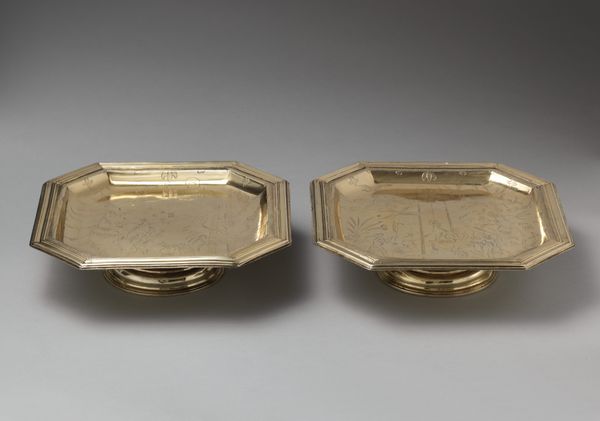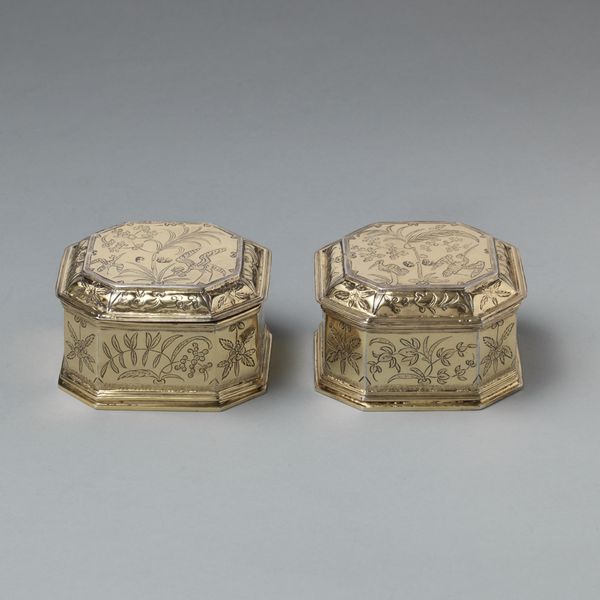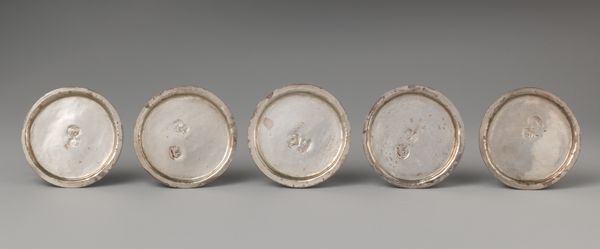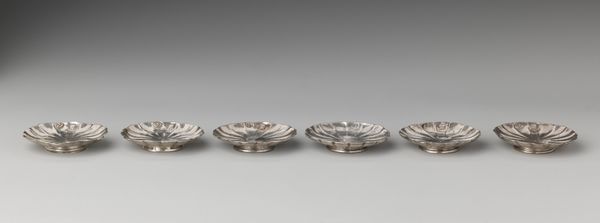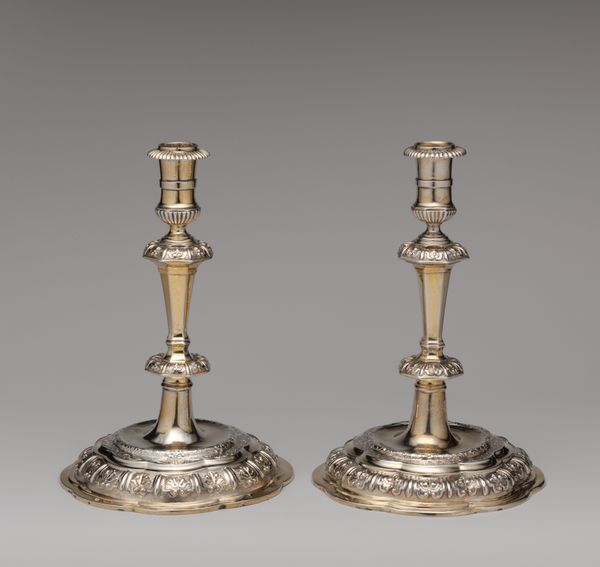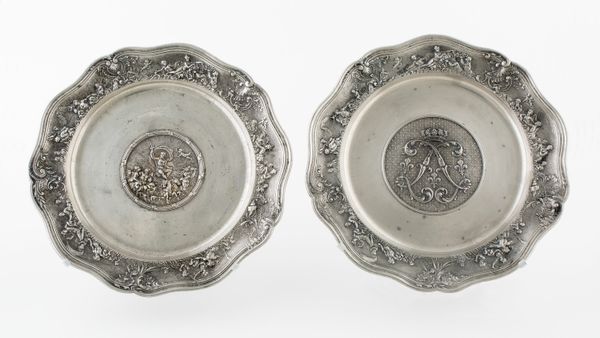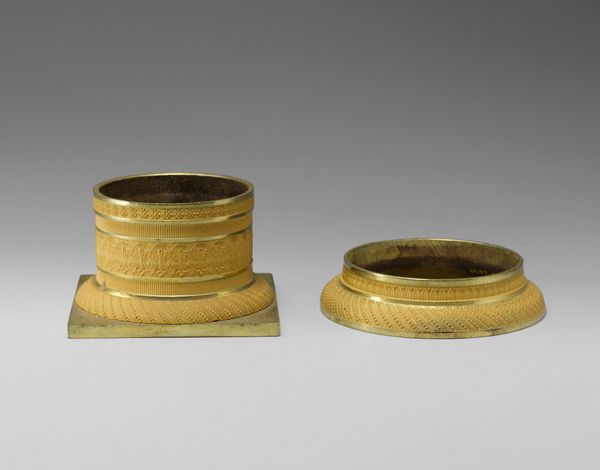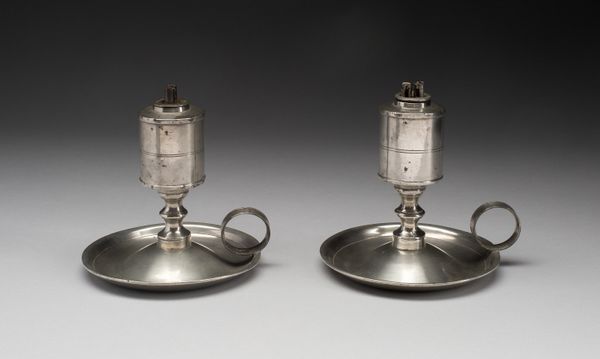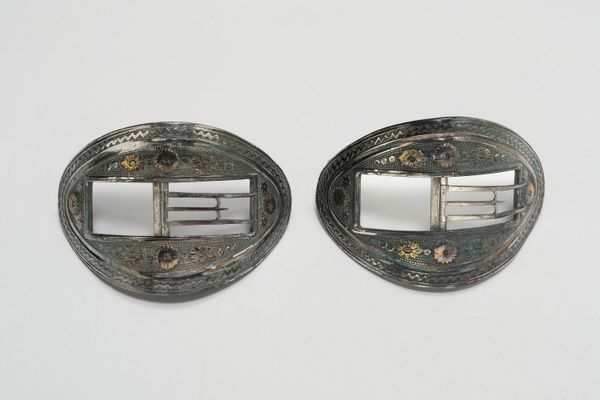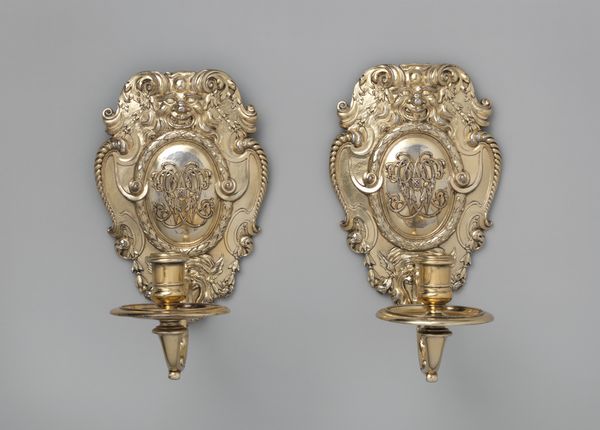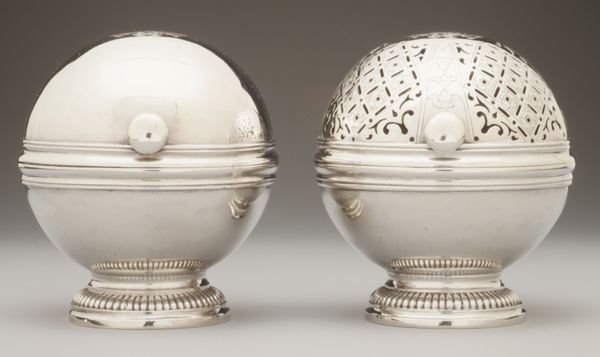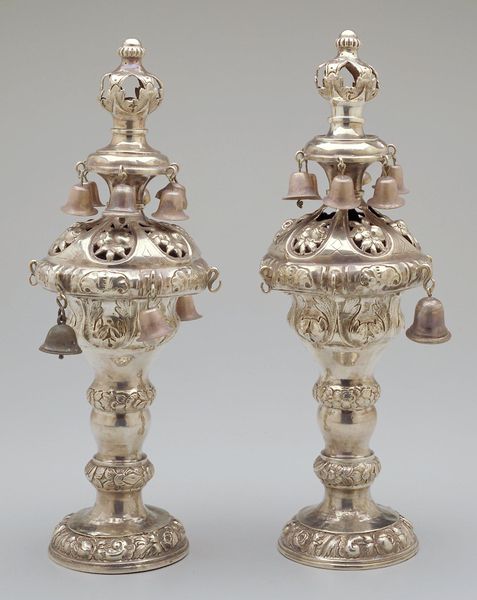
Pair of bowls with covers (part of a toilet service) 1683 - 1684
0:00
0:00
silver, metal, sculpture
#
silver
#
baroque
#
metal
#
sculpture
#
decorative-art
Dimensions: Overall (confirmed): H. 2 3/4 x W. 5 1/2 x D. 4 1/2 in., 11 oz. 5 dwt. (7 x 14 x 11.4 cm, 0.35kg)
Copyright: Public Domain
Curator: Look at this stunning pair of covered bowls, made of silver, created by William Fowle between 1683 and 1684. They are part of a toilet service. Editor: My first impression is that they feel incredibly precious, almost delicate, despite their metallic solidity. They are quite symmetrical and have a very Baroque-era feel to them. Curator: Absolutely. Let's consider the material here: silver. Its extraction from the earth, the labor involved in its mining and refining, all speak to a history of resource exploitation and the shaping of landscapes by human industry. The intricate engraving of foliate decoration adds another layer of crafted labor. Editor: Indeed. And who would have used these bowls? A wealthy person, of course, someone with the means to afford such luxurious items for personal care. These pieces reflect social stratification, and the gendered aspects of beautification practices within a certain societal echelon. What did having silver bowls for your toilet articles signify in the late 17th century? Curator: Exactly. And Fowle, the maker, how did his labor connect him to this elite consumer? What were his working conditions? Who supplied his materials? What workshops supported his endeavor? How does this particular set relate to his wider body of production and his historical status as a working craftsman? Editor: Further, we should also consider colonialism and trade. Where did this silver originate? Very often, silver of this era connects back to the exploitation of indigenous populations in the Americas and global trading routes shaped by inequality and forced labor. It wasn't *just* about luxury; these objects embody complex networks of power and control. Curator: These are very compelling contextual issues to ponder. One wonders how such gorgeous decorative pieces play into our current notions around ethically sourced objects. Editor: It challenges us to consider what remains unspoken when looking at beautiful items divorced from their complete history, and the complex economic practices they symbolize. Curator: Agreed. The material story of the bowls and covers provides us with crucial insight. Editor: It highlights just how crucial critical and historic analysis is to truly engaging with these precious pieces.
Comments
No comments
Be the first to comment and join the conversation on the ultimate creative platform.
